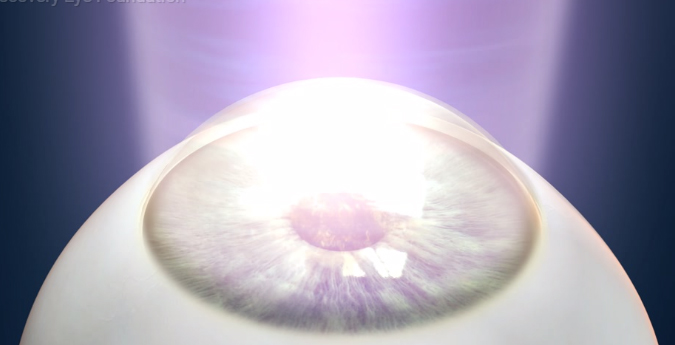Tremendous advances in corneal crosslinking (CXL) for those with keratoconus (KC) are being made by DEF-funded researcher James Jester, PhD, the Jack H. Skirball Endowed Research Chair and professor in the Department of Ophthalmology and Gavin Herbert Eye Institute at UC Irvine.
Crosslinking increases the stiffness or rigidity of weak corneas to treat thinning corneas and KC. CXL currently involves treating the thin cornea with the vitamin riboflavin and single-photon ultraviolet (UV) light. This generates oxygen-free radicals and chemical crosslinking that leads to the stiffening of the cornea.
According to Dr. Jester, there are several problems with the current method. First, it requires removal of the epithelium; second, it is a long, 30-minute procedure; and third, there is delayed visual recovery due to the healing response of the epithelium.
 Beginning around 2011, Jester’s team realized the procedure would be more precise and faster with a two-photon laser approach. This short, pulsed laser could more specifically focus the excitation of riboflavin using a low-energy infrared light.
Beginning around 2011, Jester’s team realized the procedure would be more precise and faster with a two-photon laser approach. This short, pulsed laser could more specifically focus the excitation of riboflavin using a low-energy infrared light.
Jester’s team now has a two-photon device that can produce the crosslinking in just four minutes. Additionally, it can get through the epithelium without removing it, so healing should be faster and safer.
Using two photons instead of one allows a much more precise focus of the laser to direct crosslinking in specific places. Since this device can control the volume, it can now generate a specific pattern of crosslinking to actually match the curvature of an individual patient’s cornea.
The device has been built in the lab, and clinical data on animal subjects show corneal flattening, as well as increased stiffness, which would be desirable in KC patients. The next step, is to build the device for use on humans in the clinic.

